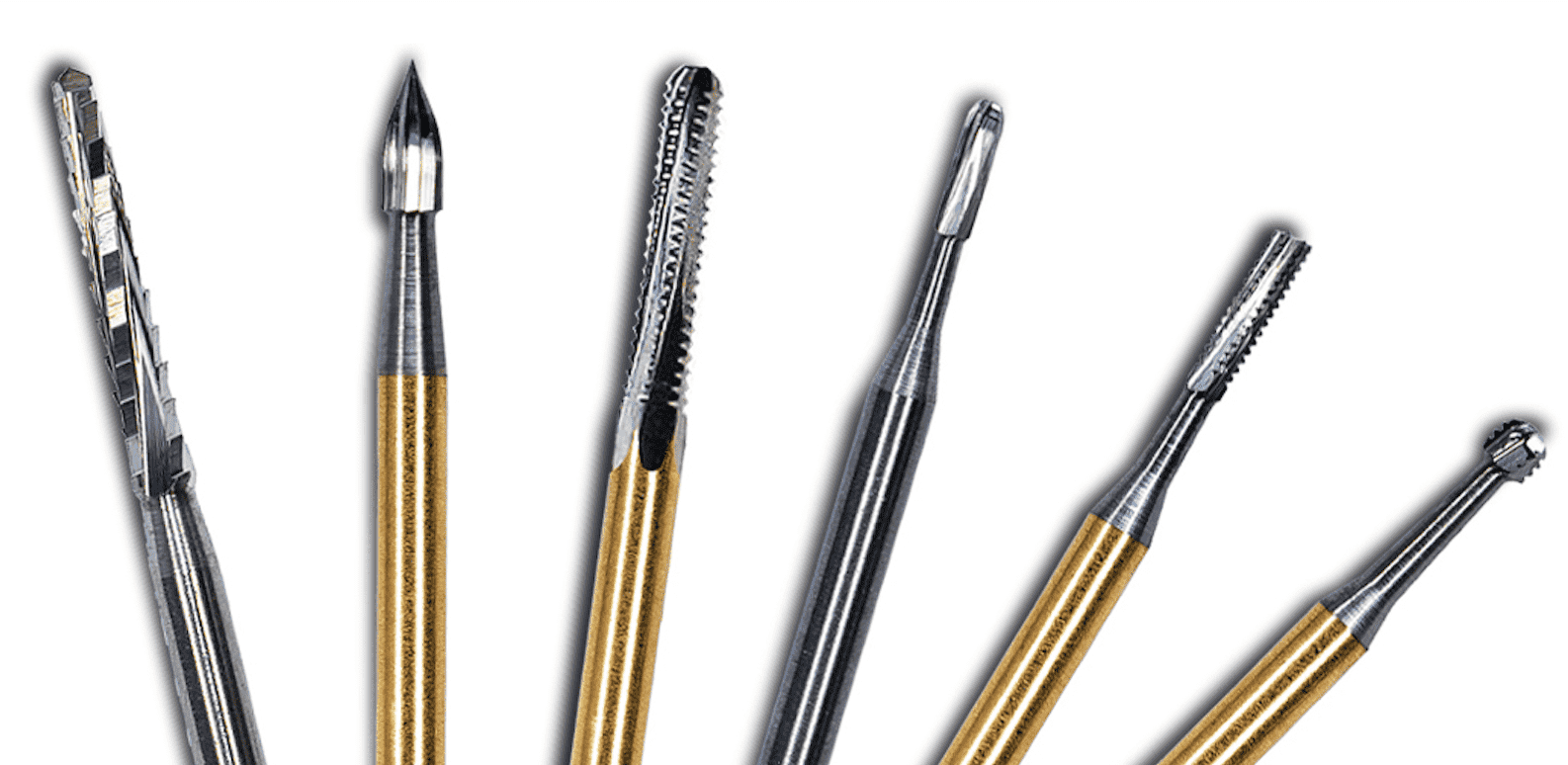The gold-finished tungsten carbide bur represents a significant innovation in dental surgery. Known for its outstanding hardness and wear resistance, it is an ideal choice for performing precise dental surgeries.
Features of the Tungsten Carbide Bur
Material Composition and Hardness:
- Mainly composed of tungsten (W) and carbon (C), forming a hard alloy with typically about 80-90% tungsten and 10-20% carbon.
- The hardness of tungsten steel can reach a Vickers hardness (HV) of 900 to 1200, many times higher than traditional stainless steel (200-300 HV).
Wear Resistance and Service Life:
- Extremely high wear resistance means slow wear during repeated use, significantly extending the service life.
- Compared to traditional materials, the wear resistance of tungsten steel dental burs is about 4 to 6 times higher.
Corrosion Resistance:
- Good corrosion resistance, especially when other alloy elements like cobalt (Co) or nickel (Ni) are added.
- This ensures that tungsten steel dental burs maintain their structure and performance during various sterilization and cleaning processes.
Thermal Stability:
- Excellent thermal stability, maintaining hardness and strength at temperatures up to approximately 870°C.
- This thermal stability is crucial for dental tools undergoing high-temperature sterilization.
5.Specific Gravity and Density:
- The specific gravity of tungsten steel is about 15.63 g/cm³, which is dense, giving the bur a solid and stable feel.
- High density aids in providing better tactile feedback and control, especially during delicate surgical operations.

Gold-Finished: Application of Titanium Plating Technology
Through titanium plating technology, tungsten steel dental burs not only exhibit an attractive golden appearance but also increase the smoothness of the surface, reducing friction, and providing antibacterial properties, essential for maintaining a sterile surgical area.
Types and Applications of Tungsten Carbide Bur
- Round - Suitable for removing large areas of decay on the tooth surface, especially ideal for large-scale leveling operations.
- Taper Cone - For fine edge shaping and smoothing, particularly excelling in gaps and edges of teeth.
- Taper Pointed - Ideal for precise decay removal in narrow areas, such as in root canal treatments.
- Egg - The rounded shape is very suitable for smoothing the tooth surface, providing a comfortable polishing effect.
- Taper T - Used for fine cutting and shaping, suitable for complex structural adjustments.
- Sharp Flame - Its unique shape is very suitable for precise carving and detailing, such as carving the tiny details of teeth.

Differences Between Gold-Finished and Ordinary Tungsten Carbide Bur
Gold-finished burs are more expensive than ordinary tungsten steel burs due to their enhanced smoothness, reduced friction, and antibacterial properties. The titanium coating significantly improves corrosion resistance, especially in environments containing fluorides and other corrosive substances.

In summary, gold-finished tungsten carbide bur not only improve the precision of surgeries but also provide dentists with more options to deal with various complex clinical situations, such as root canal treatment, pre-orthodontic surgery preparation, implant surgery, tooth carving, and shaping, etc.



